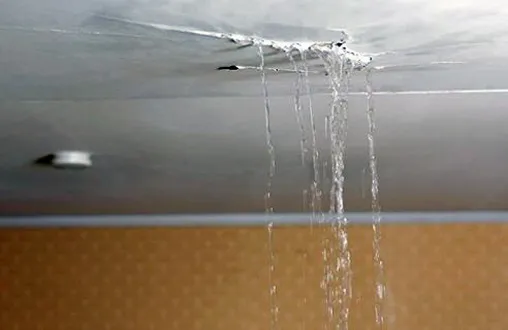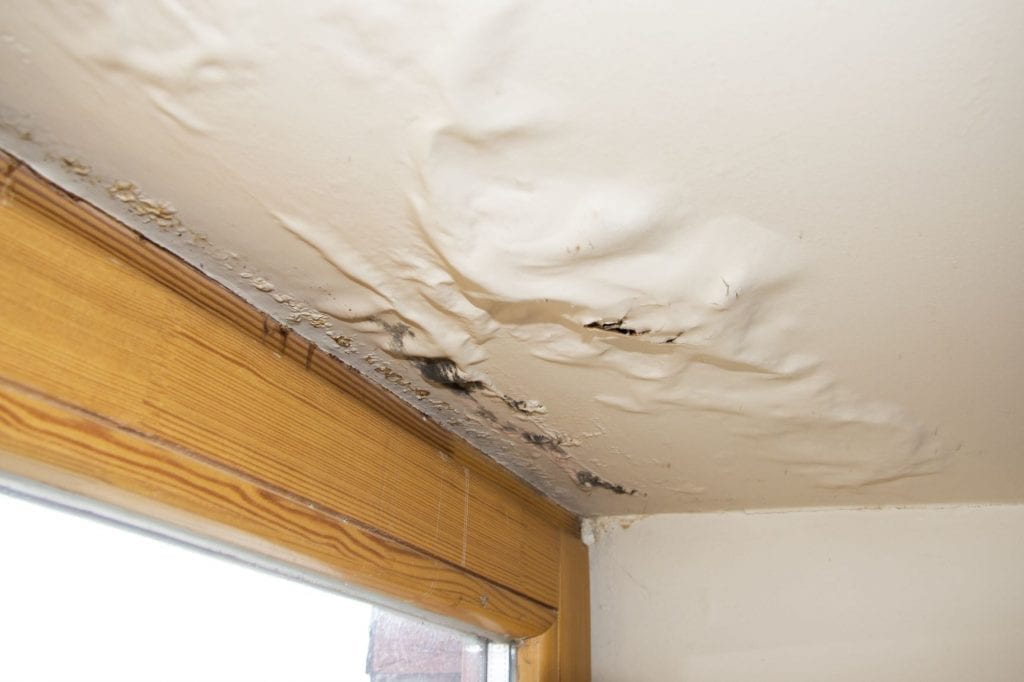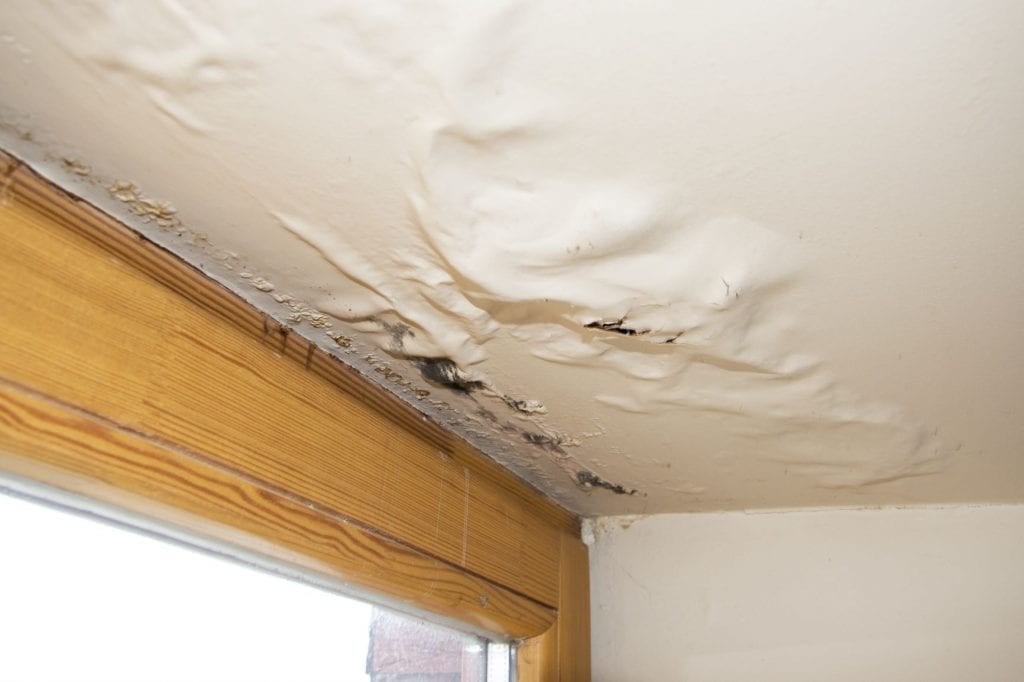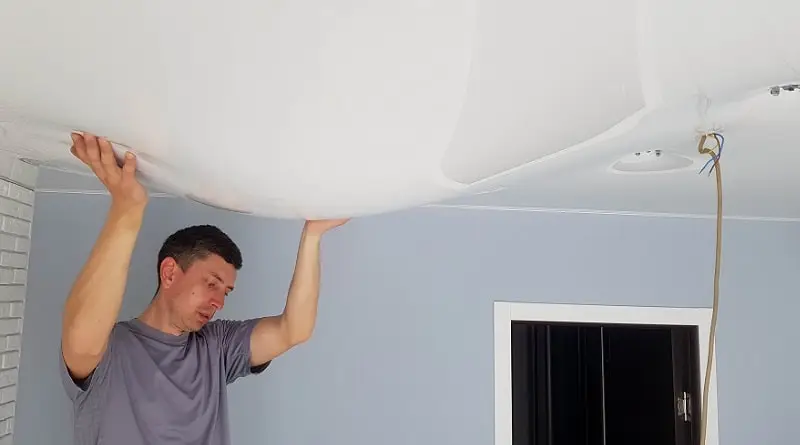Water leaks in your ceiling can be alarming, and they often show up as ceiling bubbles—bulging, discolored spots that signify trapped moisture and impending damage. If you’ve found yourself staring at a water leak ceiling bubble, it’s essential to address it immediately to avoid further structural harm and costly repairs. In this guide, we’ll explain what causes ceiling bubbles, how to repair them, and ways to prevent water leaks from damaging your home in the future.

What Causes a Water Leak Ceiling Bubble?
A water leak ceiling bubble is often the result of trapped moisture from leaks above, such as from a leaking roof, pipes, or even condensation. Understanding the root cause can help prevent future bubbles and ensure any repairs made are long-lasting. Here are some common sources of ceiling bubbles caused by water leaks:
- Roof Leaks
Roof leaks are a primary source of ceiling water damage. When roofing material deteriorates due to age, weather, or physical damage, rainwater can seep through and cause leaks. Eventually, this moisture builds up in the ceiling, leading to a visible water bubble. - Plumbing Leaks
Another culprit behind ceiling bubbles is leaking pipes. If a pipe in an upper floor bursts or a pipe joint weakens, water may start leaking, slowly soaking the surrounding area. Over time, the moisture can gather in the ceiling below, forming a water bubble. - Faulty Air Conditioning Units
Air conditioning units, especially central systems, often have drainage lines to remove condensation. If these lines clog, overflow, or leak, the resulting water can collect in ceilings and walls, creating a water bubble in the ceiling. - Humidity and Condensation
In some climates, excessive humidity can lead to condensation forming on surfaces in the home. Areas like bathrooms, kitchens, or basements are prone to high humidity and can cause moisture buildup in ceilings, particularly if ventilation is poor. - Improper Insulation
Insufficient insulation, especially in areas like attics, can lead to condensation buildup as warm, moist air meets cooler surfaces. This can gradually seep into the ceiling, leading to bubbling, discoloration, and even mold growth.
Read too: Kitchen Lighting For A Vaulted Ceiling: Illuminating Your Space with Style and Functionality
Signs of a Water Leak Ceiling Bubble You Shouldn’t Ignore
Water leaks can sometimes go unnoticed until they’ve caused extensive damage, but recognizing the signs early can save you from costly repairs. Here are key signs that indicate a water leak may be causing a ceiling bubble:
- Visible Bulging or Sagging
A noticeable bulge or sag in the ceiling often indicates water is accumulating and putting pressure on the drywall or plaster. - Discoloration or Dark Spots
A ceiling bubble may be accompanied by dark patches or yellow-brown stains, signifying water has seeped in. - Peeling or Cracked Paint
Moisture buildup can cause paint to peel, crack, or blister. This can occur even if the water bubble isn’t highly visible yet. - Musty Odor
Trapped moisture can lead to mold growth, which emits a distinct musty smell. This is often a sign that the problem has persisted for some time.
How to Fix a Water Leak Ceiling Bubble
Once you notice a water leak ceiling bubble, addressing the problem promptly is essential to minimize damage. Here’s a step-by-step guide to fixing a water bubble on your ceiling:
Step 1: Identify and Stop the Source of the Leak
First, find the origin of the leak. If it’s a roof leak, examine your attic or crawlspace for signs of water entry. For plumbing leaks, check pipes, joints, and any areas above the ceiling. If the leak is from a faulty appliance like an air conditioner, ensure the unit is turned off and the drainage lines are inspected.
Step 2: Drain the Water Bubble
To safely release the trapped water, use a small, sharp object (like a screwdriver or needle) to puncture the bubble’s lowest point. Place a bucket underneath to catch any dripping water. This helps relieve the pressure on the ceiling and prevents further sagging or damage.
Step 3: Remove Damaged Material
Once the ceiling has dried, it’s time to remove any damaged material. This may involve cutting out the affected drywall, scraping away peeling paint, or removing loose plaster. Ensure that the ceiling is completely dry before proceeding to prevent mold growth.
Step 4: Repair and Repaint
Patch the affected area using drywall compound or plaster. Once it’s smoothed out and dry, sand the surface to ensure it’s even. Afterward, apply primer and repaint the ceiling to restore its appearance.
Step 5: Inspect for Mold
After the repair, it’s essential to check for mold, which can be hazardous to your health. If you notice any mold spots, it may be wise to consult a professional for mold remediation.
How to Prevent Future Water Leak Ceiling Bubbles
Prevention is the key to avoiding water damage and ceiling bubbles in the future. Here are some steps you can take to keep your home leak-free:
1. Regular Roof Inspections
Inspect your roof annually or after heavy storms to identify missing shingles, cracks, or other signs of damage. If you spot any issues, have them repaired promptly to prevent water from entering your home.
2. Check Plumbing and Seals Regularly
Inspect all visible pipes, especially those running through walls or ceilings. Ensure that seals around fixtures like faucets and toilets are intact to avoid leaks. Regularly servicing your plumbing system can also help identify issues before they become significant problems.
3. Maintain Proper Ventilation
In areas prone to high humidity, such as bathrooms and kitchens, install exhaust fans to remove moisture from the air. Also, consider using a dehumidifier in rooms with poor ventilation to keep humidity levels in check.
4. Insulate Attic and Pipes
Proper attic insulation can prevent condensation from forming and dripping onto the ceiling. Similarly, insulating pipes, especially in cold climates, can prevent them from bursting or sweating, reducing the risk of leaks.
5. Monitor Air Conditioning Systems
Ensure that your air conditioning unit’s drainage lines remain clear and functional. Regularly inspect the unit for any signs of leaks or drips and service it as necessary to avoid condensation buildup in your ceiling.
When to Call a Professional
While minor ceiling water bubbles can be managed with DIY methods, significant leaks or signs of mold should be addressed by a professional. Professionals can accurately identify the source of a leak, thoroughly repair the damage, and ensure no mold or structural issues remain.
Conclusion
Dealing with a water leak ceiling bubble is a task that requires prompt attention and careful steps to avoid further damage. By understanding the causes, such as roof and plumbing leaks, and knowing how to fix the damage, you can protect your home from extensive repair costs. With regular maintenance, inspections, and proper ventilation, you can prevent ceiling bubbles and maintain a dry, safe living environment.
Ignoring signs of a ceiling bubble can lead to serious problems, including structural damage and health risks from mold. Addressing these signs early on can save you from major repair expenses and ensure a safer home. Don’t let water leaks go unnoticed—act quickly, repair effectively, and take preventative steps to avoid future problems.






